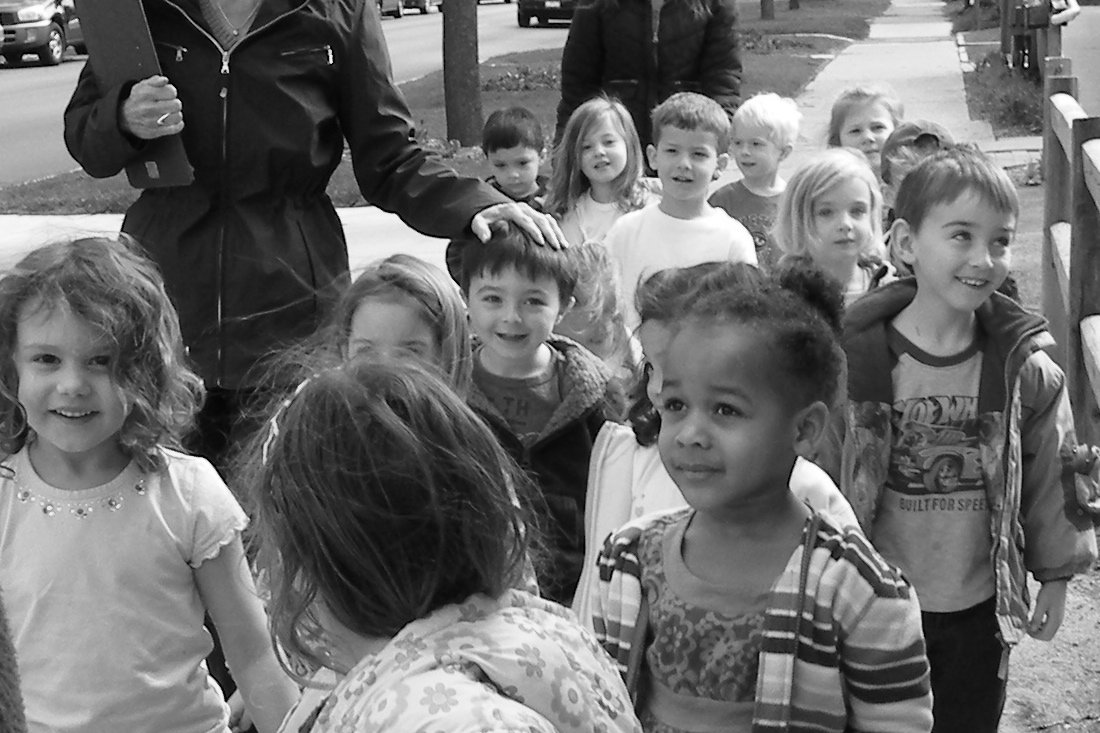
Love and friendship every day
In an effort to make Cherry Preschool as culturally inclusive and developmentally appropriate as possible, we decided not to celebrate holidays the way preschools had been doing since my own kids attended nursery school. We eliminated the costumes from Halloween. Parents seemed to understand this decision. Not all families celebrated Halloween, costumes were expensive and competitive, and some of our little guys were frightened by them. We also did away with the Indians and Pilgrims for Thanksgiving, which our families understood was a myth that perpetuated stereotypes about Native Americans. The winter holidays were incorporated into what we called the Sharing Season. Families came in to share their holiday traditions and explain what they meant to their households.
Preschoolers understand and need expressions of love and caring every day. Come to think of it, so do most people.
All of that was acceptable to our families, but Valentine’s Day was a harder sell. As a staff, it made sense to eliminate the store-bought valentines that elementary school children distribute to every child in their class. Because it was hurtful to children who didn’t receive as many valentines as their classmates, which was the custom in my era, these days in elementary school (and beyond in some communities) every child receives one signed by the giver. There are no names on the envelope, as that makes the distribution too challenging. This costly and time-consuming custom makes no sense at all to preschoolers, who don’t understand what a valentine card is. In addition, we eliminated the candy and treats, as many families objected to their children receiving sugar-laden goodies and we had several kids with food allergies.
Thus, we sent the following notice to our families:
VALENTINE’S DAY POLICY:
We love our children and families, so we will make our very own special valentine creations at school. The teachers may tie this activity into a larger theme of friendship or family. PLEASE DO NOT SEND VALENTINES OR CANDY TO SCHOOL. While this is a lovely custom for older children, it is not appropriate or meaningful for preschoolers. Thanks for your cooperation!
You would have thought we were the cruelest preschool ever judging by the response of some parents. Despite what we thought was a reasonable explanation, some children still showed up with cards for their classmates in their backpacks. And some parents brought candy, cupcakes, and Valentine sweets to school. The staff felt like Valentine grinches sending all of those goodies back home. I’m sure those parents were angry and thought we were being too PC about this.
But here’s the thing. Young children really don’t get Valentine’s Day. What they do understand is friendship and love. So, if they want to create an art project (we never forced them to do this) that expresses their love by gluing pink and red tissue paper on a paper plate or making a painting dedicated to someone, why not? When we asked them who their creation was for, the list often included their family members, pets, and friends. But they would also mention superheroes, Disney characters, beloved stuffed animals, toys, and teachers. The love of a three-year-old can be boundless.
Commercial valentines that they can’t read make no sense to preschoolers. Sweets, while always exciting, have no connection to February 14 for them. But telling someone you love them is always welcome and not restricted to one day in the calendar. I guess that made me the Valentine Grinch-in-Chief in some parents’ eyes.
Preschoolers understand and need expressions of love and caring every day. Come to think of it, so do most people. Perhaps we should all abandon the commercialization of February 14 by Hallmark, restaurants, candy makers, and jewelry stores and take a page from preschoolers, whose random hugs (pre-pandemic) and expressions of love are truly heartfelt and not restricted to one day a year.
I invite you to read my book Terribly Strange and Wonderfully Real and join my Facebook community.
Boomer. Educator. Advocate. Eclectic topics: grandkids, special needs, values, aging, loss, & whatever. Author: Terribly Strange and Wonderfully Real.


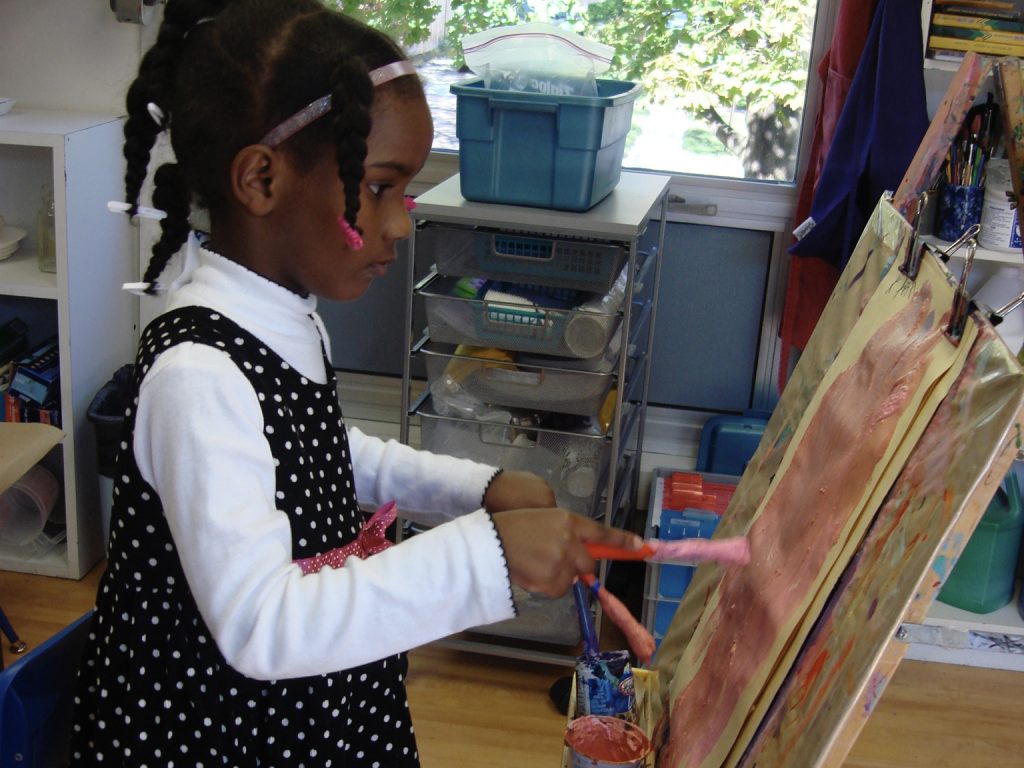
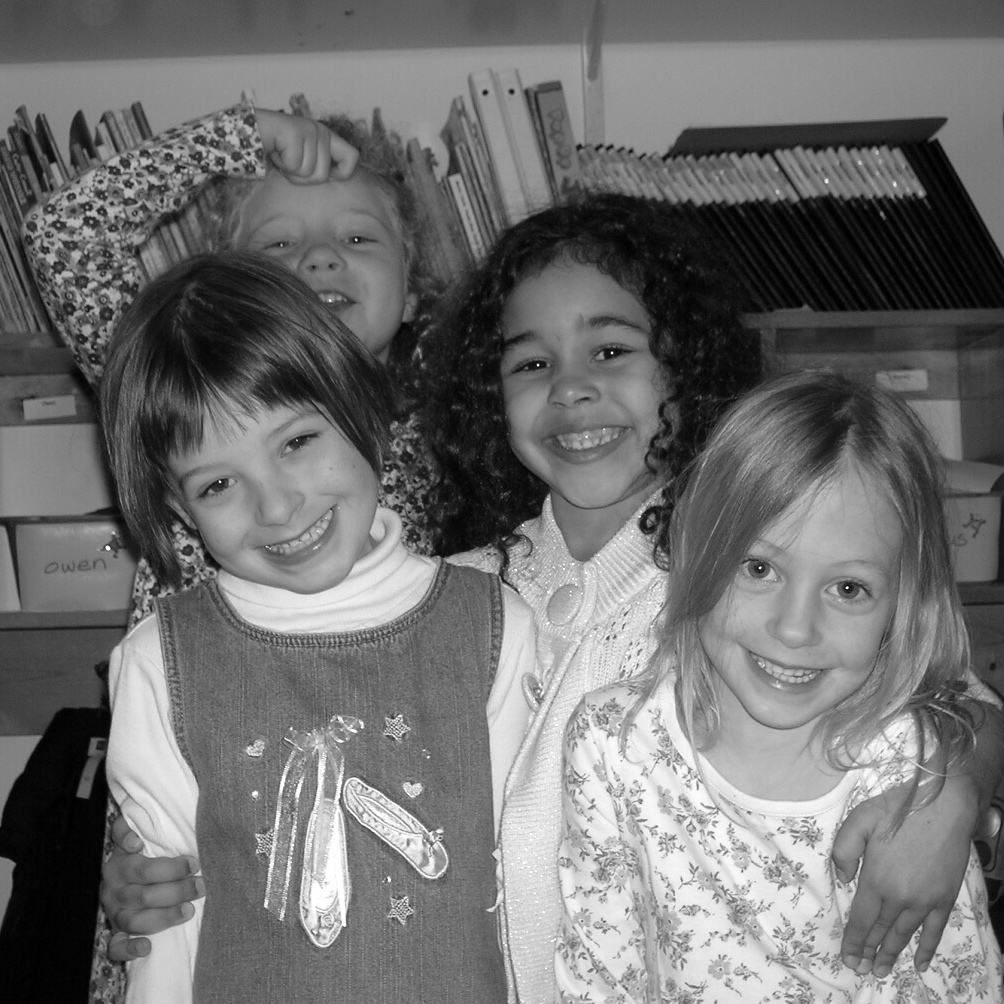
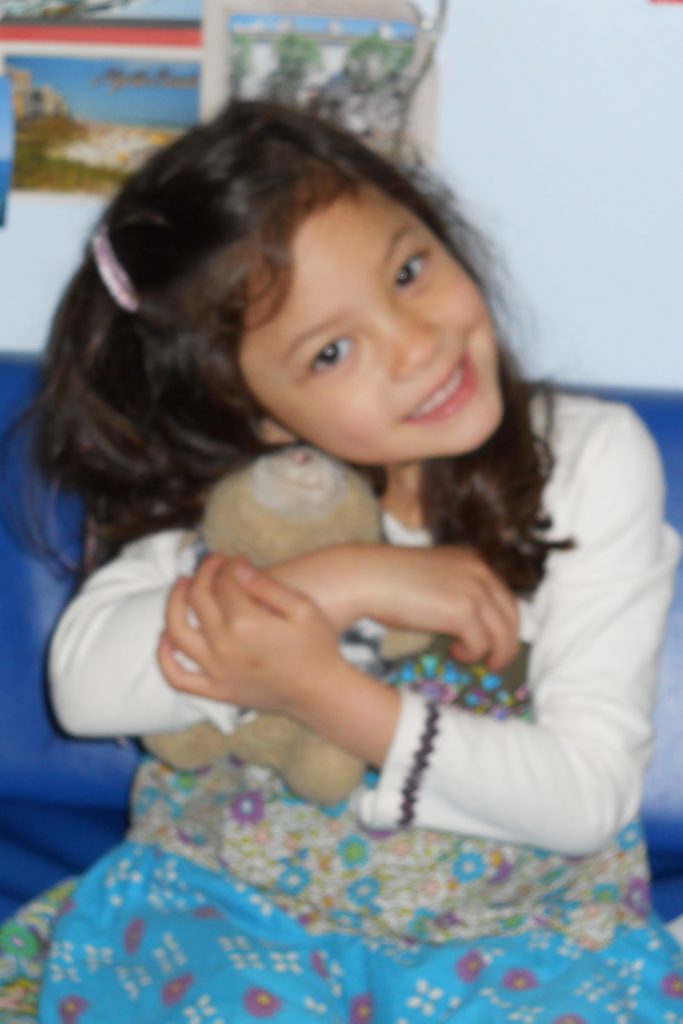
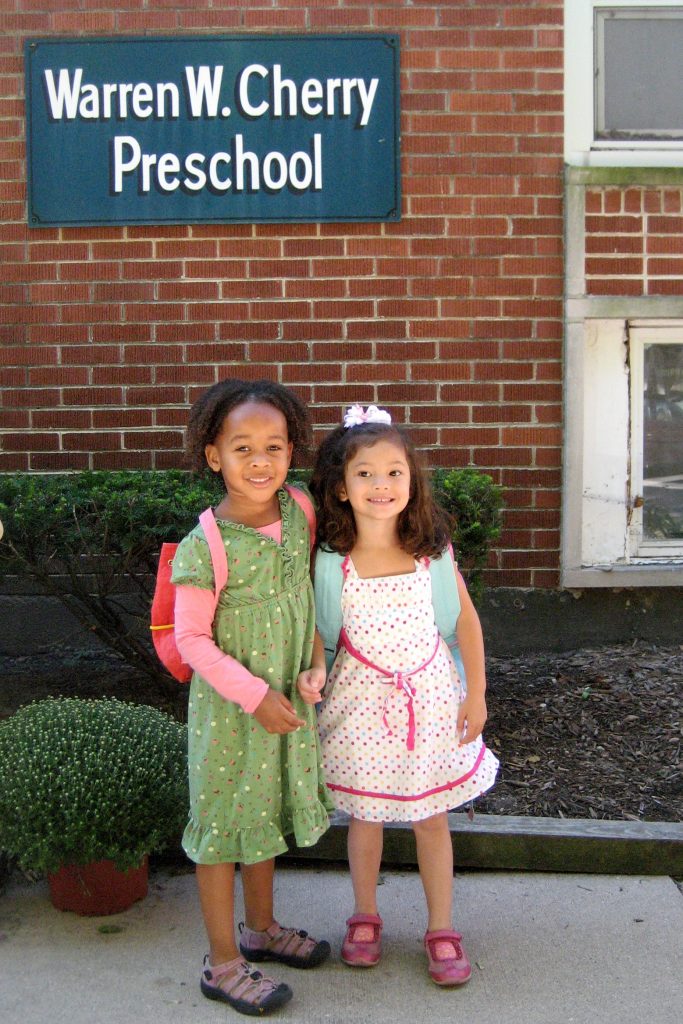
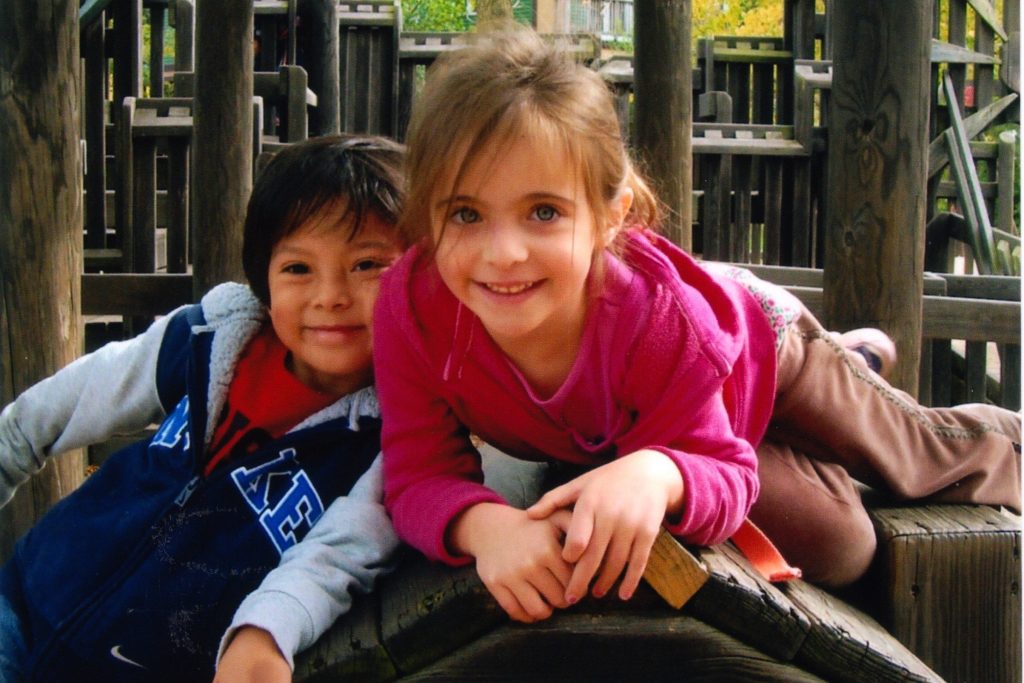

Oh, I love this story, Laurie…especially the list of potential recipients. You brought a big smile to my face…and such wonderful photos!
Thanks, Barb. And I loved your story which illustrates the best way to celebrate Valentine’s Day.
Laurie, I understand the sound educational philosophy behind your decision to downplay some of the holidays, and calling December the Sharing Season is lovely!
But truthfully I might have been one of those disgruntled parents sorry to give up Halloween! When my son was in the early grades I remember we all made creative, thoughtful costumes rather than buying commercial ones. His school, like yours, was progressive , always striving to instill the right stuff in the kids.
I bet you’re still in touch with your Cherry School kids and parents!
Dana, Halloween is fine for grade school, although I still wonder about the kids who are left out because their religion or culture don’t celebrate it. Before we had this policy, I remember a child crying when we went around the circle asking,
“What are you going to be for Halloween?” I was more in touch before the pandemic. I really miss being able to pop in, although I am so proud of the school for staying open safely this year. It can be done.
Understood Laurie! And truthfully I may be remembering my son’s grade school Halloweens more than his pre-school ones.
And I’m surely grateful that back then we found a pre-school that was warm and nurturing – much like your Cherry School with a wonderful director much like you.
Terrific story, Laurie, and so very true. As you can imagine, Bank Street treated holidays very similarly to Cherry Preschool, so all this particularly resonated with me.
And I must admit that even I did a little (private) eye-rolling at Bank Street’s “no costume” Halloween policy. But I do understand the broader issues involved and the sensitivity of treatment shown by these schools. Plus, there are/were plenty of times and ways to celebrate these holidays as one wishes (or, more likely, as one’s children wished) outside of school and the school day.
So, while I really love your title, I trust you know that you were not really the Grinch after all. And, indeed, even he turned out to be an OK guy by the end.
Bank Street was the model of excellence, John. I did feel a bit grinchy, especially when we had to send back Valentine cards or treats sent despite our policy. The teachers would always check to see if they had to do this. I always said yes, and blame me.
Laurie, you made your pre-school a haven for those children and a wonderful, caring place of inclusion. I agree…expressions of love and caring ALL the time, not just on Feb. 14!
Thanks, Betsy. Especially after the way the impeachment trial ended (totally predictable), I think we could use a bit more love year round.
I love this story, Laurie! And I don’t believe you were grinch-like at all and hope the parents learned a lesson. I well remember the paltry number of Valentine cards I received in grade school, when the popular kids had their boxes stuffed to the brim. Interesting what you recall, right? Maybe that’s why I try to minimize my involvement with Valentine’s Day even now.
Thanks, Marian. I remember how it felt as well, and how counting how many cards you received was a measure of your popularity. For my kids, everyone had to get a card, which didn’t hurt feelings as much but was pretty meaningless.
Great story, Laurie! As you saw in mine, I’m not a fan of Valentine’s Day either. In preschool it makes even less sense than in elementary school, although I think the whole card exchange should be eliminated everywhere. You were not being a Grinch, even if some parents thought so at the time. Also, your pictures are fabulous! I think I recognize one of your granddaughters in a couple of them.
Yes, Suzy, that is my granddaughter Maya (the dancer) who grew up in the preschool. Parents have strong feelings about their kids not missing out on something they had and tend to forget that they were older when they collected Valentine cards at school and that many of them were hurt by not receiving as many as some of their classmates.
Very evocative story for me. In the lower grades in grammar school, we did the mailbox-on-teach-desk thing. I once overheard my teacher telling some classmates to make sure that they put a valentine in my mailbox whether they liked it or not.
I’m not a fan of the practice!
I think our generation was traumatized by those awful decorated shoeboxes to collect valentines. They could be so disappointing and hurtful. Better to show love and caring all year round.
Thanks for this lovely story. You weren’t taking away–you were giving love greater support and freedom. I hope everyone came to see it that way eventually. I’m sure the kids were just as happy and were spared some of the negatives of the “traditional” version of celebration.
The kids were always fine with covering paper with pink paint and dedicating their creation to a parent or their dog or a teacher or their favorite stuffed animal. They were 3 or 4, and their love was expansive and varied from day to day. It took longer for parents to see the light, and some never did.
Laurie, I decided after the opening paragraphs to read your narrative aloud to my wife (a benefit of the pandemic; we are both at home)! This has hardly ever happened with any Retro story, BTW, but you know that I am also an early childhood educator and I was just LOVING everything you wrote in those opening paragraphs about changing to more developmentally (and culturally) appropriate practices. So I did proceed to read it all aloud, but not without tears coming into my eyes and a lump to my throat. What a great story; but more importantly, what a wonderful and supportive environment you created for those preschoolers!
As i wipe my tears, I want to tell you another “February story” related to early childhood education. My mentor Lilian Katz, was visiting a preschool when they did (unfortunately) the standard “calendar time.” They counted the days to Washington’s Birthday. And then one of the kids said, “I know it’s his birthday, but he’s not in our class, and I’m not sure if anyone is bringing a cake for him.” Or something like that!
Oh, Dale, what a great story. I greatly admired Lilian Katz. Calendar was one thing most of my staff could not let go of, despite exchanges like the following:
If yesterday was Tuesday, today is…
Friday, January, etc.
You get what I mean here.
Yes, I totally get that! The perils of “calendar time.” I will also tell you another Lilian story. At the end of class (at U. of Illinois grad school), just before dismissing us, she would look around earnestly and ask, “Do you have enough to read? Is there anyone who doesn’t have enough to read? You’re welcome to stop by my desk here and borrow something of mine.”
You were lucky to know hr as a teacher.
A wonderful perspective on the pleasures of early childhood education, Laurie! And the pictures are heartwarming. All those wonderful, open faces. You’ve delivered us a beautiful valentine portrait of true love. Thanks!
Thanks, Charles. Young children have the capacity to show love, acceptance, and inclusion in so many ways all year round. That’s why I loved my job so much!